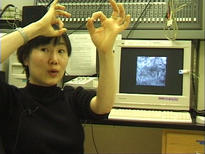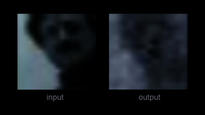DR. YANG DAN'S CAT SCAN
The installation is an ode to the Chinese-American neurologist Dr. Yang Dan, the first person to succeed in draining an image from the brain. With this installation Frank Theys reflects on the implications of her scientific research in the context of art philosophy. German philosopher Arthur Schopenhauer preferred music to all other art forms because it could 'immediately' (without mediation) express the Will. All other art forms have to call on mediation through words or images for representation. In the modern visual arts, there has been a continuous quest for that same kind of directness. Jean-François Lyotard for example saw this quest for the presentation of the 'unrepresentable' as the motto of modern art. Ideally, communicating the unrepresentable would happen by communicating directly from one brain to the other, without mediation. This is in fact what Dr. Yang Dan tries to do, in a scientific way, by tapping the data from the brain and reconstruct the information on a computer screen. On this first level of the research however, she has to check if she understands the data correctly, she needs to turn back to representation. The (moving) image remains the best possible way for our brains to comprehensively grasp a complex stream of data. In the reconstructed picture, the face of the person can clearly be discerned, though we cannot shake off the impression that the face has adopted a feline touch.




- Format DV(DV (consumer standard))
- Color system PAL
- Color col.
- Year 2000
- Duration 00:15:00
- Languageinfo
Subtitles: Dutch/ Flemish, French
Spoken: English UK
-
Artists